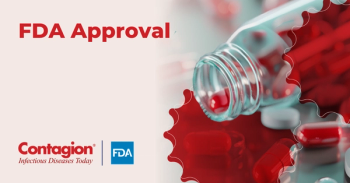
IAS & WHO Identify Research Priority Areas for HIV-Positive Infants, Children & Adolescents
WHO and IAS come together to create the first-ever global research prioritization agendas at the 9th IAS Conference on HIV Science in Paris, France.
Each day infants, children, and adolescents are newly infected with
In order to improve outcomes among this population, gaps in research need to be filled. To this end, the World Health Organization (WHO) and the International AIDS Society (IAS) have come together to create the first-ever global research prioritization agendas on pediatric and adolescent HIV; they
The new guidance is the product of a “global process” which had been led by a “working group of experts,” according to the official IAS press release. The experts informed the agendas via consultations with researchers, healthcare workers, donors, civil society representatives, policy makers, and global organizations alike. The guidance “represents an international consensus” addressing the “top priority questions” related to HIV testing, treatment, and service delivery for HIV-positive children and adolescents. The guidance is to be used as a means to inform “the work of all stakeholders” involved in the funding, support, or conducting of HIV research involving children and adolescents worldwide.
“Everything we know about the pediatric and adolescent HIV epidemics point to the need for more and better tailored research to address the many clinical and implementation research questions that remain unanswered in the global response,” IAS President Linda-Gail Bekker explained in the press release. She continued, “These priority research agendas can help answer the most pressing questions in the field, streamline research, maximize investments, inform important policy changes, and, ultimately, improve the lives of infants, children, and adolescents living with HIV.”
According to the press release, 260,000 adolescents became infected with HIV in 2016. Children and adolescents have lower HIV testing and treatment rates compared with their adult counterparts. Less than half (43%) of HIV-positive children are accessing antiretroviral treatment that could potentially save their lives; only 43% of infants who have been exposed to the virus are being tested at the recommended age of 2 months.
In order to cut back on these numbers, health officials are calling for more research. “We must take action now to close the gaps in the HIV response for children and adolescents, to deliver better HIV prevention, treatment, and testing to those in greatest need,” WHO HIV Department Director Gottfried Hirnschall warned in the press release. “The IAS/WHO process has helped us to define priority areas for further research, to inform global policies and implementation to bring us closer to an AIDS-free generation for infants, children, and adolescents.”
Some of the top research priority areas for HIV-positive infants and children include: optimal placement and timing of point-of-care diagnostic tools, strategies to improve treatment adherence and factors that affect their success, as well as strategies or interventions designed to improve “access to, uptake of, and retention in care,” and different factors that could impact their success.
Some of the top research priority areas for HIV-positive adolescents include: strategies and interventions designed to “improve access to and uptake of HIV testing service,” as well as the different factors that could impact their success, “effective monitoring approaches and strategies to improve adherence among adolescents and factors that impact their success,” and different interventions that might work to improve retention in care (and the related factors that could affect their success).
A full list of the research priority areas can be found in the IAS press release.
In addition to highlighting the different areas for research focus, the institutions also provided recommendations for maximizing “the impact of new and ongoing research efforts in the field.” According to the press release, two of these are to:
- Strengthen national monitoring and evaluation systems to obtain the age-disaggregated data needed to support monitoring and inform effective policies and programmes
- Improve programmatic data to help measure the impact of new strategies and determine what works best in specific contexts
The aforementioned documents will be published on the IAS CIPHER website, along with related information regarding the development process. A guidance-related supplement will also be published in May 2018 in the Journal of Acquired Immune Deficiency Syndromes (JAIDS).
Newsletter
Stay ahead of emerging infectious disease threats with expert insights and breaking research. Subscribe now to get updates delivered straight to your inbox.




















































































































































































































































































